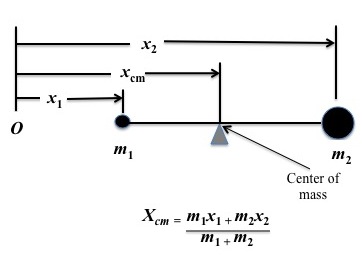A fixed point on a rigid body through which the resultant force of gravity always passes, regardless of the position of the body. In a uniform gravitational field, it is identical to the center of mass. Thus, for practical purposes, the center of gravity and center of mass coincide. In strict physical terms, however, there is an infinitesimal difference between the two. The center of gravity represents the unique point in an object used to account for the object’s response to external forces and torques. For the human body, the center of gravity is not at a fixed anatomical point, but its location varies with the position of the body segments. The figure below gives an example of how center of mass can be depicted and calculated.
